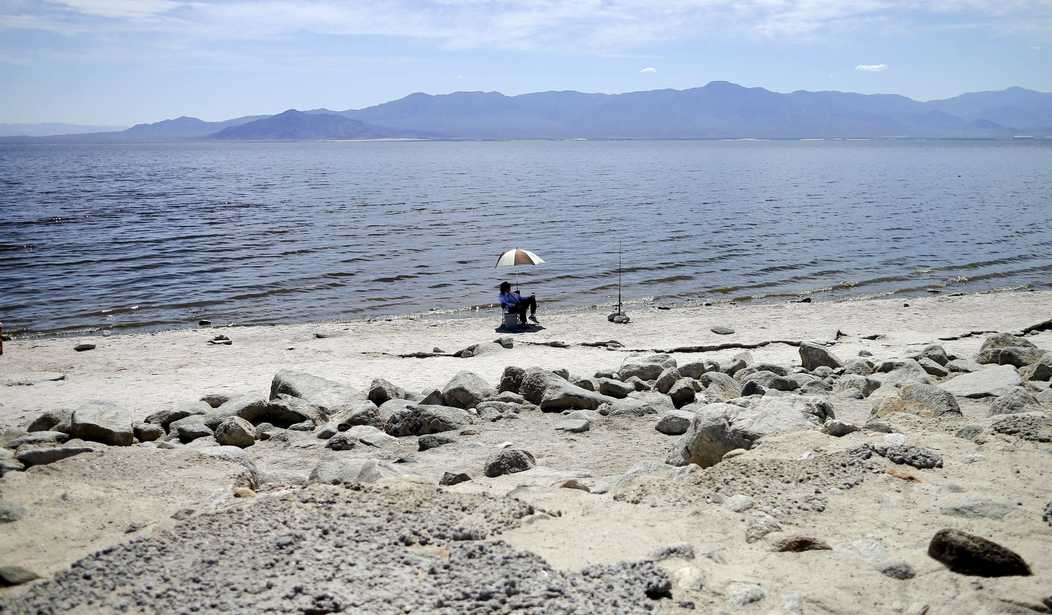Lithium is obviously a key element for the creation of Lithium-Ion batteries used in everything from laptops to phones to electric cars. Cars in particular use a lot of lithium because they use a lot of batteries. This has made the element extremely valuable, up to $80,000 per ton at one point. And unfortunately, as recently as last year it appeared we were stuck with China controlling most of the world’s supply even though it doesn’t have most of the world’s reserves.
In the global battery supply chain, China is everywhere. Tianqi Lithium also owns stakes in SQM, Chile’s biggest mining company, and Greenbushes, Australia’s biggest lithium mine. Both Tianqi Lithium and its domestic rival Ganfeng Lithium have signed deals across South America’s “lithium triangle,” a mineral-rich part of the Andes at the junction of Argentina, Bolivia, and Chile. It’s a similar story for other rare-earth materials needed for batteries: China controls 70 percent of the mining industry in the Democratic Republic of the Congo, home to almost all of the world’s cobalt, another critical component of lithium-ion batteries.
In addition to locking down global lithium supplies, China has also started to expand domestic production—it’s now the third biggest producer of lithium behind Australia and Chile, even though it holds less than 10 percent of the world’s supply.
This dominance didn’t happen overnight. In 2015, China made lithium a national priority as part of its “Made in 2025” industrial strategy. An estimated $60 billion in electric vehicle subsidies helped create a market and the battery supply chain to go with it. Battery companies have invested billions in domestic sources of lithium in a way that’s been impossible elsewhere in the world.
Lithium projects outside China have been at the mercy of the markets, slowing and expanding as the price of lithium ebbs and flows. But domestic investment has been almost constant. As a result, China is the only country that can take lithium from raw material through to finished batteries without having to rely on imported chemicals or components. That’s mostly due to a political environment that emphasizes reducing the cost of lithium rather than maximizing shareholder value.
This is bad news because we really don’t want to be dependent on China (and prop up their domestic auto production) any more than we wanted to be dependent on Saudi Arabia for oil. The good news is that recent surveys have confirmed we have lots of lithium suitable for mining here at home. In fact, the largest known reserves in the world have been found near the Salton Sea in California.
Imperial County, a sprawling desert region three hours southeast of Los Angeles that straddles the U.S.-Mexico border, may not be what you would typically associate with Southern California.
Home to ramshackle landmarks like Salvation Mountain, the Salton Sea and Bombay Beach, it’s the least populated county in the region with just 180,000 residents. But U.S. politicians are suddenly interested in this rural area for other reasons — namely, the wealth of lithium deep beneath its surface…
Imperial County — which now touts itself as Lithium Valley — is sitting on an estimated 3,400 kilotons of lithium, according to the 2023 study authored by Lawrence Berkeley National Laboratory. The coveted mineral is mostly found in Australia, China and Chile, and U.S. officials predict that demand for this “critical” resource will skyrocket by 4,000% over the next several decades.
There’s enough lithium in this one spot to make the US self sufficient for decades. But of course there is a catch. The lithium is part of briny underground water which makes it difficult to extract. Warren Buffet’s Berkshire Hathaway runs several geothermal plants in the area which use hot underground brine to create steam which is used to spin turbines. Berkshire Hathaway has been trying to find a way to extract the lithium from the brine but so far it’s not going well.
From the start, Berkshire’s challenge was twofold. First, it needed to separate lithium from that hot brine using a commercially unproven class of technology known as Direct Lithium Extraction, or DLE. Then it aimed to develop new technology to process that lithium into lithium hydroxide.
For the first challenge, the California Energy Commission gave Berkshire a $6 million grant in May 2020. As part of its agreement with the state, Berkshire said it would use DLE technology from another company, AquaMin Lithium and Water Recovery Inc.
But corroded equipment and clogged pipes from the superhot brine are plaguing the extraction operation, according to the three sources with direct knowledge. “I think Berkshire has an unsolvable problem,” said one source, who described the facility struggling to get even the most basic processing equipment to work due to the extreme heat of the geothermal brines…
“It’s just a nasty, hot soup that’s sometimes acidic,” said Anderson, who is not involved in Berkshire’s project.
So we’re not there yet. It’s going to take some new technology or possibly a resort to older technology such as drying ponds to turn this deposit into useable lithium. We have all the lithium we need but we don’t quite have the know-how to extract it.
The Salton Sea is an interesting area which has alternated between being a lake and a desert over tens of thousand of years. Between about 1700 and 1900 it was a desert until water was directed into the area to allow farming. By the 1950s the area was a resort for fishing, boating and bird-watching. But the lake continued to shrink and as it did it became more salty over time. Most of the fish and many birds died off and the tourists left with them. Now this area could become part of a new California gold rush of sorts if the needed new technology arrives.
🔆Salton Sea
groundbreaking study, scientists exploring Southern California’s Salton Sea, the state’s largest lake, have uncovered a remarkable lithium reservoir estimated to be worth $540 billion. This ‘white gold’ discovery positions the United States as a potential leader. pic.twitter.com/0OG9HhPw5I
— RAaH UPSC (@RaahUpsc) December 27, 2023








Join the conversation as a VIP Member